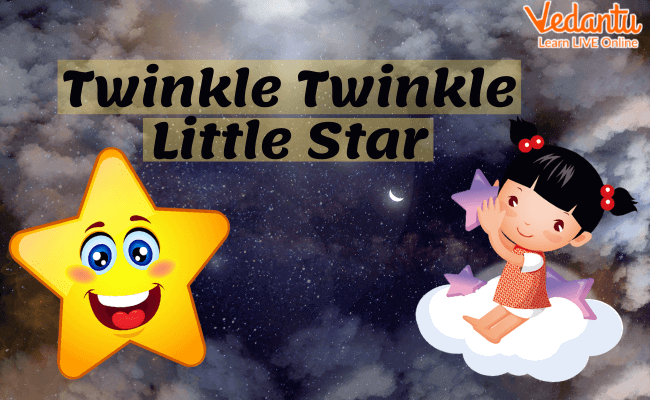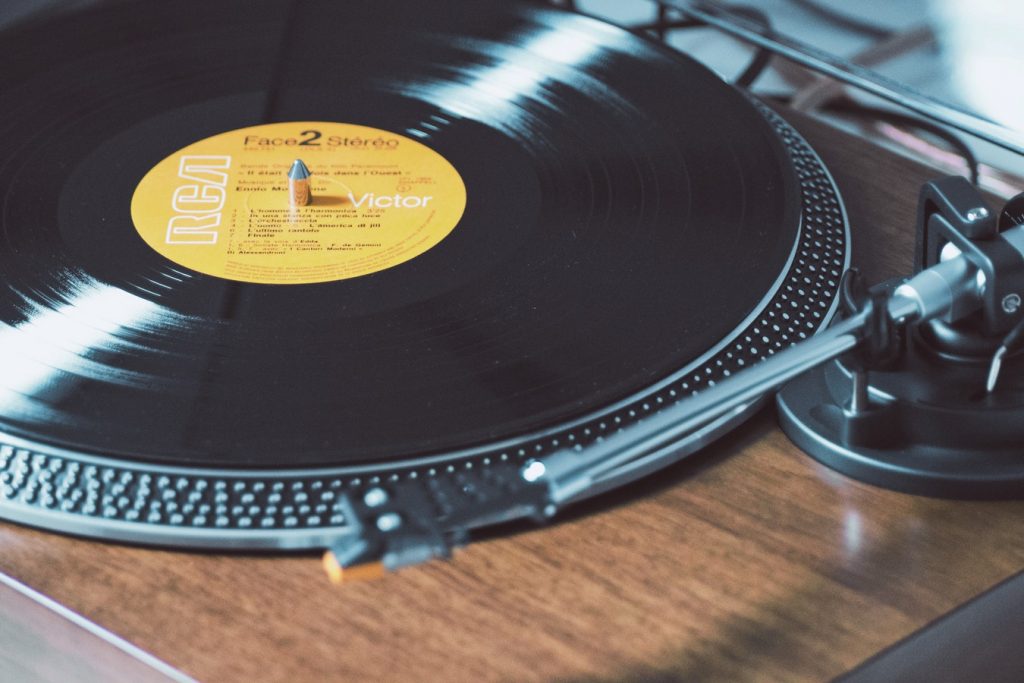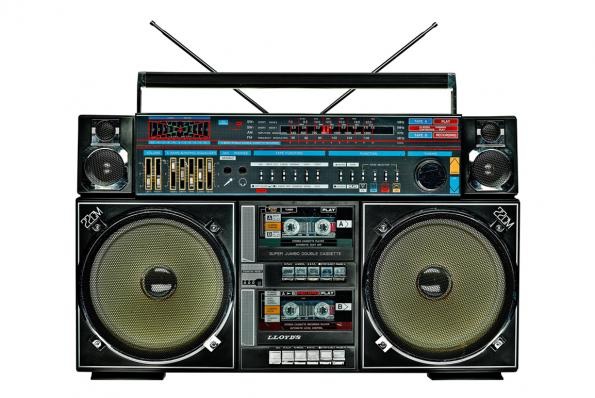Music Devices
Maya Hawke: “I like being more of who I am and less fearful.”

Don’t know how kids enjoy Stranger Things,” exclaims Maya Hawke, her eyes glistening at the idea of young minds grasping the bizarre world of the sci-fi phenomenon. She is astonished by the intricate stories that run throughout the series rather than the show’s increasingly sinister turns. It’s so perplexing,
Hawke joined the cast of the biggest TV franchise in season three as Robin Buckley, a rambling ice cream waitress and Steve Harrington’s inexperienced sidekick. She has seen some of the most memorable scenes from the show in just two seasons, including the terrifying Battle of Starcourt Mall and the battle against the eerie, vindictive monster Vecna in this month’s season four finale.
She groans, remembering how bleakly the show ended, “Everything goes so wrong.” It’s really terrible about Max [spoiler alert: Sadie Sink’s intrepid high schooler is currently unconscious]. It’s horrifying and amazing but also makes you wonder, “What?!?” While the uncertain destiny of Max makes for a grim cliffhanger for this season to end on, another character’s fate has fans in a tizzy. A number of petitions, including one with more than 60,000 signatures, have appeared on change.org advocating for the revival of metalhead and Hellfire Club leader Eddie Munson (Joseph Quinn) for the series’ concluding episodes.
Hawke says gently, “I fully sympathise with those who want to see more of him,” but she adds a condition to her sympathies. The same fans would be so annoyed if we kept killing people and resurrecting them, I feel. However, because Joe Quinn is such a great character, I would adore it if they could find a way to include Eddie’s ghost in the mix. He’s such a terrific performer and so much pleasure to have around the set. She adds adoringly that going back without him would be like “losing a bizarre limb.”
Whether there are ghosts or not, season five will be the last in the Stranger Things saga. While viewers speculate about the direction the Hawkins youngsters’ trip may take, Hawke is generally choosing not to worry. She says, “I have a lot of faith in the Duffer brothers.” If I were a screenwriter and my actors were constantly appearing in the media advising me on what to do with the character, I would be like, “Uh, I got this? So I have 100% faith that they will develop a fantastic Robin story arc. She pauses for a little moment of reflection before making one brief comment: “I hope she gets to kiss someone – someone she likes. For her, that would be cool.
Hawke’s career has only surged since she landed her part in the Netflix hit, earning more and more exciting and larger parts. She will make an appearance in Wes Anderson’s top-secret new film Asteroid City later this year, an experience she talks excitedly about. It was the finest time ever, she says, “everyone was great, and he’s terrific.” “I absolutely adored it!”
While collaborating with the renowned director, she discovered a “coincidental” similarity in their philosophies. She says, “The way he works is the way I really prefer to work. He has a very clear idea of how the character would behave, what they will say, how they will stand, and what they want. Then he gives you so much latitude to add that humanity within those constraints. She claims that some people prefer to “get to know their character’s spirit.”
After Asteroid City, Hawke will star with her mother, Uma Thurman, in the upcoming thriller The Kill Room. She has previously appeared with one of her parents on screen (who are divorced). She appeared in an episode of The Good Lord Bird in 2020 alongside her father, Ethan Hawke.
She admits honestly, extremely aware of the advantages that comes with having parents who have previously achieved success in the field, “I didn’t get those jobs as any other actor – I didn’t apply for those jobs. It was something along the lines of, “It would be so much fun if you were here and we could do this together because it’s hard to be together.” There is no attempt made to portray them as anything other than parents and daughter on set: “God no! When we work together, it feels quite familial.
Music
Understanding the Charm of “Twinkle Twinkle Little Star”

Twinkle Twinkle Little Star undoubtedly one of the most well-known lullabies in the world, “TwinkleTwinkle Littl Star” has been lulling generations of listeners and capturing their hearts.
History of the Lullaby
Undoubtedly one of the most well-known lullabies in the world, “Twinkle Twinkle Little Star” has been lulling generations of listeners and capturing their hearts. This beautiful tune has reached across time and cultural .aEarly 19th-century French song “Ah! vous dirai-je, maman” by Mozart is where “Twinkle got its start. It’s a song that’s been around since then. This well-known song’s evolution into the beloved lullaby we appreciate today illustrates a complex history that has changed according to different cultural influences and musical modifications.
Exploring the Melody: Musical Notations of “Twinkle Twinkle Littl Star”
Popular Variations and Interpretations of the Song
Many musicians and artists have contributed their artistic vision to “Twinkle Twinkle LittleStar” throughout the years. These modifications have enhanced the song’s adaptability and its capacity to connect with listeners of various musical tastes..
Influence on Pop Culture and Children’s Education
“Twinkle Twinkle Little Star” has become more than just a lullaby thanks to its appearances in a variety of children’s books, television shows. Its involvement in early childhood education exemplifies how important it is for promoting young brains’ cognitive and creative growth.
Analyzing the Timeless Appeal of “Twinkle Twinkle Little Star”
The song “Twinkle Twinkle” LittleStar” has a timeless allure because to its entrancing melody, restful rhythm, and cozy lyrics that arouse feelings of warmth and nostalgia. Its capacity to stir feelings and instill tranquillity has cemented its reputation among people all across the world.
Learning and Playing “Twinkle Twinkle Little Star” on Different Instruments
“Twinkle Twinkle Little Star” serves as an introductory piece for people learning to play a variety of musical instruments, including pianos, flutes, guitars, and ukuleles. Its simple structure and recognized tune make it an essential component of music instruction, igniting a love of music in students of all ages.
Importance of “Twinkle Twinkle Little Star” in Early Childhood Development
Early exposure to music, particularly through charming tunes like “Twinkle Twinkle Little Star,” is essential for enhancing cognitive development and promoting emotional well-being in young children. The lullaby’s calming tones and rhythmic pattern help young toddlers develop their memory, linguistic skills, and ability to communicate their emotions.
Appreciating the Global Reach and Adaptation of the Song
“Twinkle Twinkle LittleStar” has a worldwide appeal that has allowed it to cross national boundaries and linguistic barriers and win over the hearts of people from all walks of life. Its flexibility to be adapted to many linguistic and musical genres emphasizes its cross-cultural relevance .
Conclusion
With its enduring tune and sweet lyrics, ” has continued to amaze generations, serving happiness, and musical initiation for both kids and adults. Its capacity to cross boundaries significance as a treasured component of the world’s musical history.
Frequently Asked Questions About “TwinkleTwinkle’ Little Star”
-
Q1.Is “TwinkleTwinkleLittle Star” a traditional nursery rhyme?
” It is true that the nursery rhyme “TwinkleTwinkle Little Star” has a long history that dates back to the 18th century.
- Q2.Who composed the melody of “TwinkleTwinkle Star”?
- Wolfgang Amadeus Mozart, a well-known composer, is credited with creating the tune for “Twinkle Twinkle LittleStar.”
- Q3.What makes “TwinklTwinkle Little Star” an ideal choice for beginners in music?
- It is the perfect place to start for anyone learning to musical instruments because to its straightfor repeated pattern familiarity.
- Q4.How has “TwinkleTwinkle Little Star” influenced popular culture?
- A cultural staple, the lullaby has been used into a variety of media, including children’s novels, television shows,educational program.
- Q5.Why is exposure to music like “TwinkleTwinkle LittleStar” crucial in early childhood development?
- Young children’s , linguistic, and emotional development are aided by music, particularly well-known and calming tunes like Twinkl Twinkle Little Star.”
Music Devices
Old Music Devices

Nowadays, we have smartphones with music applications and software that allow us to listen to music anytime, anywhere. We also have several music devices specialized for music such MP3 player, Ipod…With those technologies, everything seems so easy and convenient. However, have you ever wonder how our seniors listen to their music before any things like phones and music players are born? You will be wow when you get to know those cool old music devices.
Victrola
Victrola is a phonograph which is invented in 1877 with ability of mechanical recording and reproduction of sound. The machine is produced by Victor Talking Machine Company with the ideal of phonograph that looks like a piece of furniture rather than a sound machine. After the Victrola was introduced in August, 1906, it was immediately become a hit which encouraged the company to release many sizes and designs of cabinets with the price range vary from small tabletop models with $15 up to $600 for Chippendale and Queen Anne-style cabinets of fine wood with gold trim.
The original Victrola design had many faults in which the most problematic is deep cabinet. The music devices required to reach down into the cabinets to change the record by lifting the needle. However, the problem was soon recognized and fixed by manufacturer. The new model used a domed which contained turntable and tone arm sitting nearly the top of the cabinet. New design model was only produced only few thousands which made them valuable to collector nowadays. In present, victrolas is famous decoration furniture which can bring luxury and ancient feel to the house.
Table Radio Player
Table radio player is a small, self-contained radio receiver that were widely used during 1900s. Back then, radio was the common music device in house and music was played from radio programs during the day. Most of table radio player is limited by functions even some had compact discs or audio cassette players and clock audio functions. Later model may have CD functionality which allows the devices to play CD in the table radio. The device can be run on battery power and portable for its small size.
Nowadays, due to the growth and innovation in technology, table radio player is not widely used as before and preferred as a furniture rather than music devices. There are not many CD or cassettes for people to play on table radio. The limited function is also one of reasons why people switch to modern radio with dials and multi-function built in. However, for some, dials are so much cooler than buttons and the device can bring back all the good memory in the past when everyone gathered around to listen to their favorite radio programs.
8 Track Tape Player
Before CD was invented and the technology innovation for Internet with mp3 file, tape was the most famous music container over the world. 8-track tape, also known as Stereo 8 or eight-track cartridge, is a magnetic tape sound-recording technology that was popular in mid-1960 to late 1970s. The device was created by a consortium led by Bill Lear in 1964. The invention was belonged to Lear Jet Corporation. The 8-track device was innovation from 4-track cartridge.
The device reached its peak of popularity during the booming automobile industry. The 8 track tape player was preferred by its convenience and portability. However, with cassette taking over the industry with many innovation in functions and designs, eight-track cartridge became less common in homes and vehicles in the late 1970s.
Boom Box
The boom box is still cool music device up to now. The bigger the boom box is, the cooler the owner seems. Carrying a giant good-looking boom box on the shoulder is one of sign of coolness in the 80s. The boom box is a common transistorized cassette tape recorder/player and AM/FM radio. With the birth of discs, some models have CD player instead of cassette player in the old model. The boom box is loved because it has an amplifier with one or two loud speakers and a carrying handle to carry the boom box around.
Designed for portability, boom boxes can be run on batteries as well as by line current. The size of boom box dependeds on how loud and heavy bass the device can provide. The biggest can reach the size of a suitcase. With its function, boom box has closely related with urban society and has become one of icons in American hip hop culture. Until now, you can see boom box in the hip hop or B-boy/break dance video.
With the booming of MP3 players and smartphone where people can listen to any songs they want on Internet, the popularity of boom box is rapidly declined. In order to adapt with the growth of technology, some models have included connections for MP3 and digital formats using USB connector or Bluetooth.
Walkman
It is a big mistake if Walkman is not on the list. This famous portable audio cassette/tape players in the late 1970s. The product is one of pioneers in changing music listening habit by allowing people to carry recorded music and listen to their favorite songs anytime anywhere they feel like through lightweight headphones. The music device is famous and loved over the world for the new experience.
In present, the music device is developed into many models in order to fit in the growth of digital platform. However, with many people, Walkman using cassette is represented for their youth.
Music Devices
Music Device History

In 21st century, listening to Music Device History is getting easier and easier with many modern and high-tech devices. The development of audio technology now allows us to listen to any songs we like with just a smart phone. Saying goodbye to the time that we have to write down the lyrics and look for the songs among radio and compact discs. Now, with just many applications and software, just by one click and we will know the name of the song is playing. With such an amazing help from technology, have you ever wonder how long it takes for us to get here? When was the first music device invented? This article will answer those questions by get you through the timeline of music device development.
Where All the Stories Began
The very first music device was Music Device History was made in Jan, 1811. It is an automatic musical instrument that produces sound by placing pins on a revolving cylinder or disc. The original music box was tiny container that can fit into a waistcoat pocket. In 1815, the very first factory that produced music boxes was opened. The industry quickly expanded to many countries including Germany and US. From a tiny music box, this music device then was developed into giant designs and many other variations. And at the end of 19th century, music box was rapidly replaced by player piano. Nowadays, there are still music box manufactures around the world but mostly for decoration purpose.
1850s to 1900s
After the birth of music box, in 1857, phonautograph was invented by Edouard-Leon Scott de Martinville. The device is known as the earliest device that could record sound. Phonautograph transcribed sound waves as undulations using a traced line on smoke-blacken paper or glass. Not long after the invention of phonautograph, 1870s, phonautogram was defined as device can provide records that contain enough information about the sound in theory. However, with the insubstantial two-dimensional line, physical playback could not work until computer technology recreated the records in 2008.
In 1876, the piano player was invented and one year later, in 1877, the first phonograph was created by Thomas Edison. The invention soon made massive change in the music and audio industry. The device was mechanical recording and reproduction of sound using the vibration waveforms. The machine then was improved by Alexander Graham Bell who is the first patterned for a practical telephone that change the way human communication.
After the significant change from phonograph, in 1889, the first jukebox was introduced. The invention was an innovation from phonograph which involved rubber tubes and was activated by coin in each tubes. Back then, the device was incorporated with other devices until inventors implemented on this automated music-playing device.
During 1900s
20th century has witnessed huge changes in the Music Device History and sound industry as many significant inventions were born and set the foundation for many innovations later. The first invention in 20th century was radio station in Nov, 1920. KDKA was the very first commercially licensed radio station over the world. The station can operated on clear channel and broadcast. As the radio station was available, the radio industry was booming for radio products such as rec.
Not until 1964 had eight-track player and tape been invented. It was a magnetic tape sound-recording technology. The invention was innovation from four-track cartridge. The stereo 8 was then introduced under Lear Jet Corporation and was a massive hit in the sound and audio industry. After that, with the corporation with automobile industry, 8-track players started to be installed in cars which then were available in many cars and trucks through the early 1980s.
However, the era of 8-track did not last for long with the introduction of cassette in 1971. The invention then changed the entire music industry by allowing record dictation for high-quality music playback. Many music production then switched to cassette and the production line started to expand with many products and innovations.
Five year later, the first boom box was patterned. It was a portable transistorized cassette tape recorder or player with AM/FM radio. The design composed of two or more loudspeakers, an amplifier, radio tuner and cassette player. The louder and heavier bass will require bigger design. This music device soon became an icon in urban society and closely linked to American hip-hop culture.
The music industry then experienced another change with the invention of Walkman which is a portable cassette player through headphones. The device soon became a favorite music player by teenagers and music fans.
Another big change in 20th century was the introduction of compact disc or CD in May, 1982. The invention was the result of digital technology which allowed higher music quality than cassette. The circle thin shape can contain more songs than cassette and not very soon until the CD era had took over the world. Not for music, along with computer and electronic innovations, VCD was born. The invention then changed the direction of music industry as many music player manufacturers started to release CD-player products including boombox and Walkman.
In the late 20th century, finally the MP3 was invented. With the help of computer science and Internet, we finally can download music from online website, setting another platform for music industry besides physical sales. Music devices then had another ultimate shift from CD to digital music and the era of digital was just beginning.
In the Beginning of 21st Century up to Now
21st century started with the first portable media player in 2002. Many innovations came after and Ipod generation began to boom. The product is a pioneer in using touch sensitive controls to scroll down the playlists. The Music Device History industry was remarkably changed with smaller MP3 player, media playback and yes, touch screen. The music devices and players are getting smaller with many applications and functions built in. Smartphone comes along and changes the game of music industry for its music functions. In 2010, we finally had to say goodbye to Walkman – an icon of music player in 80s after the dominance of CDs and MP3. With the fast changing environment, we will continue to witness more amazing creations and innovation in music device industry in near future.


